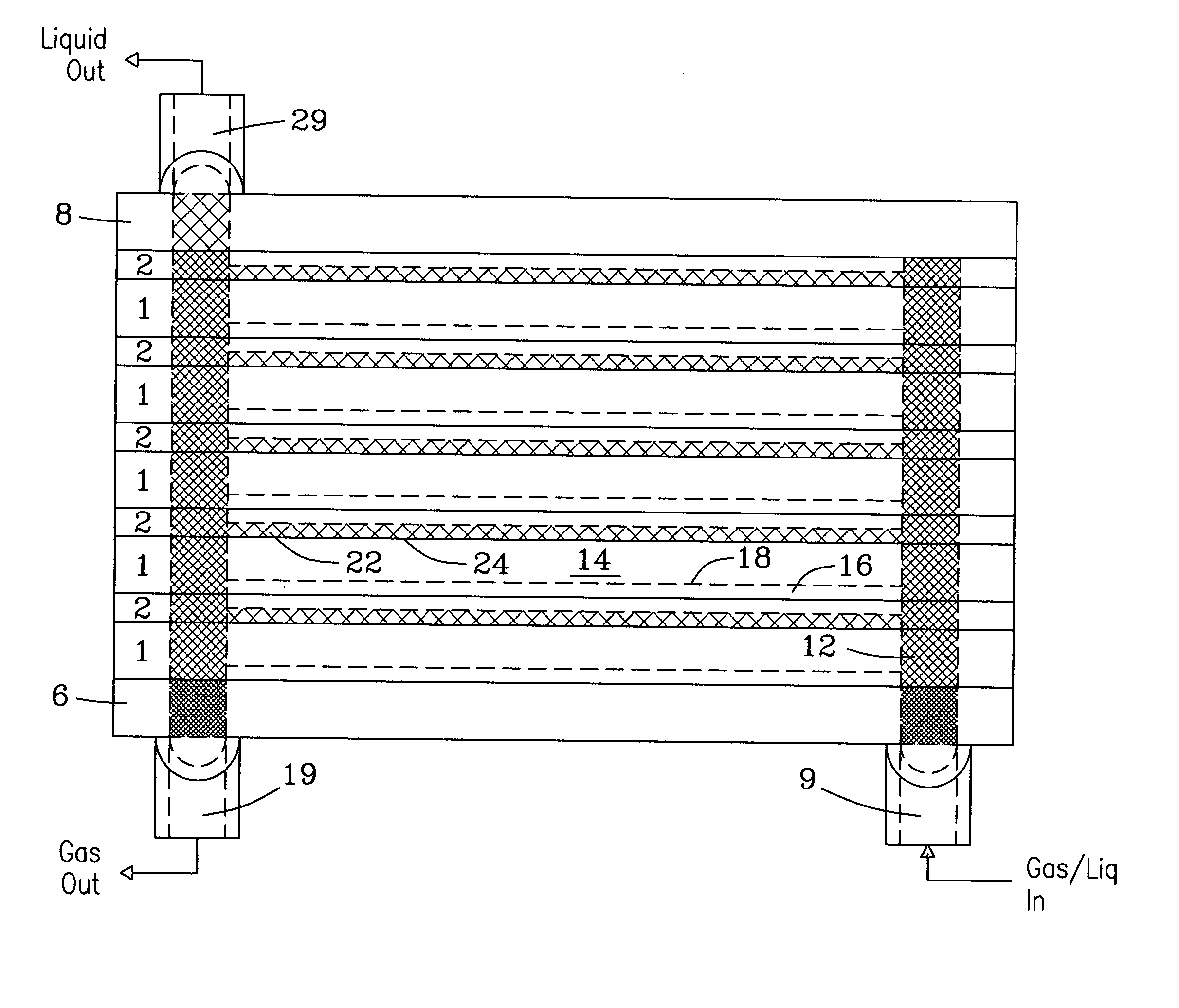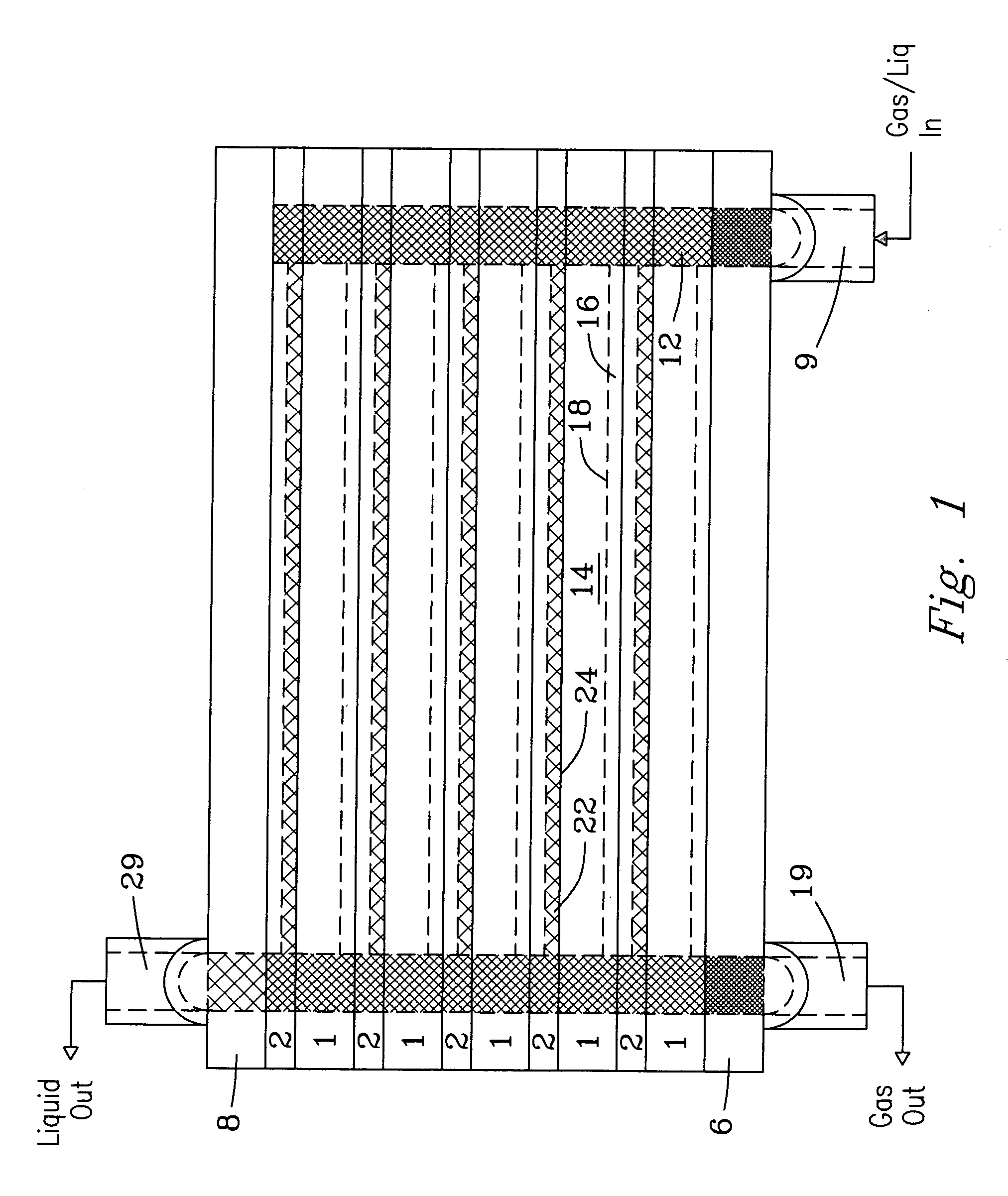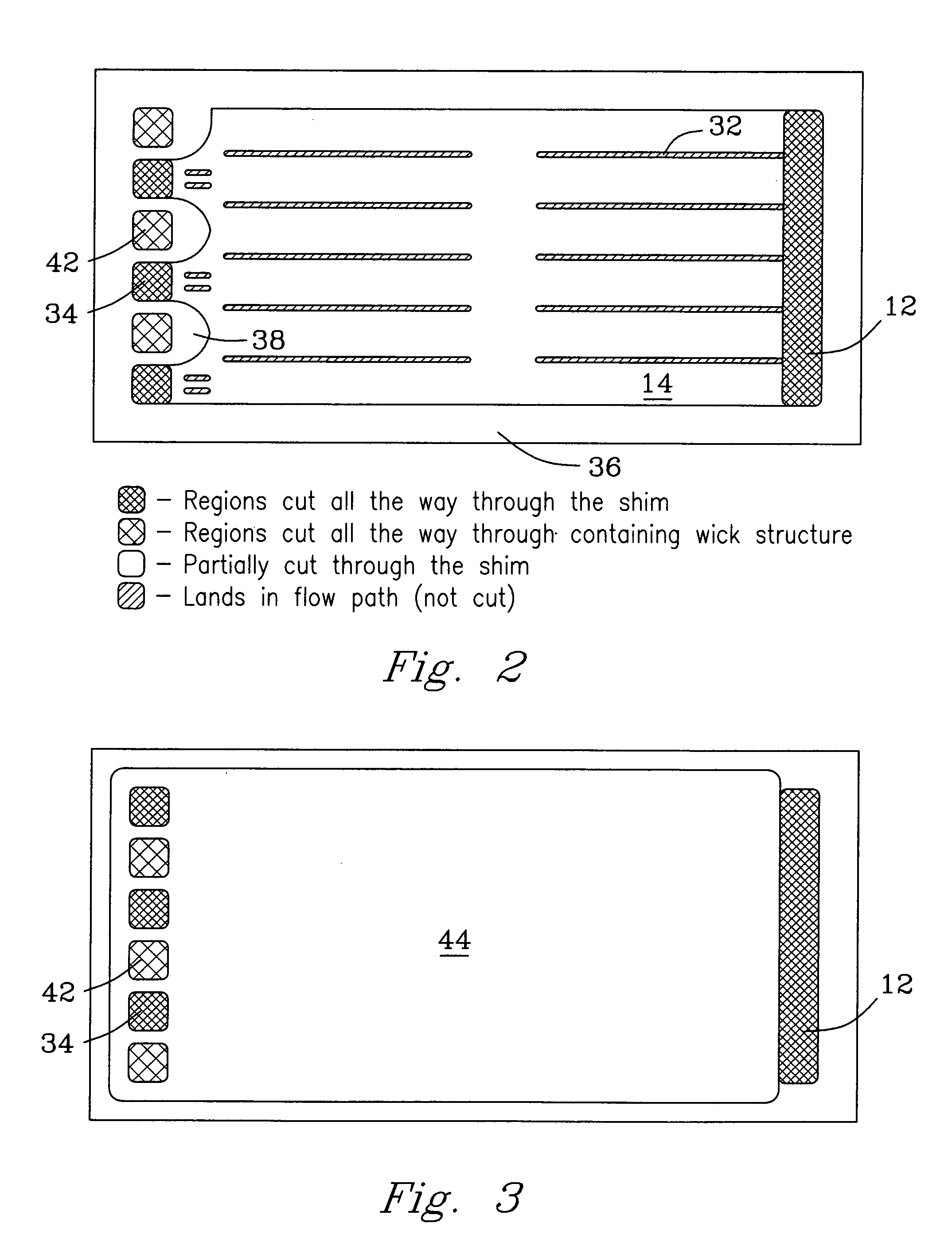Conditions for fluid separations in microchannels, capillary-driven fluid separations, and laminated devices capable of separating fluids
a technology of laminated devices and microchannels, which is applied in the direction of osmosis/dialysis, hydrogen/synthetic gas production, combustion air/fuel air treatment, etc., can solve the problems of complex flow behavior and achieve the effect of improving cycle efficiency
- Summary
- Abstract
- Description
- Claims
- Application Information
AI Technical Summary
Benefits of technology
Problems solved by technology
Method used
Image
Examples
examples
[0083] Condensation experiments were conducted in a single-channel, microchannel device. A channel was constructed that was 0.040 inch (1 mm) deep×2 cm wide×8 cm long. A 2 cm×2 cm sintered metal pore throat was placed at one end. In one set of experiments, a piece of Novex LC2001 filter paper having a dry thickness of 0.017 inch was placed in the channel as a wick, and pieces of 2 cm×2 cm 20×20 mesh stainless steel screen (McMaster-Carr) and 2 cm×2 cm 60×60 mesh screen were placed over the pore throat area to provide for a compression seal of the pore throat. In a second set of experiments, the filter paper wick was not used, insteada piece of 2 cm×8 cm 60×60 mesh screen was placed on the side of the pore throat, and a piece of 2 cm×8 cm 20×20 mesh screen placed on top. In both experiments, the channel was closed by a 0.010-inch stainless steel shim. On the other side of the steel shim, water flowed through a 0.5 cm deep×2 cm wide×6.4 cm long channel to extract heat from the condens...
PUM
| Property | Measurement | Unit |
|---|---|---|
| temperature | aaaaa | aaaaa |
| Reynolds number | aaaaa | aaaaa |
| viscosities | aaaaa | aaaaa |
Abstract
Description
Claims
Application Information
 Login to View More
Login to View More - R&D
- Intellectual Property
- Life Sciences
- Materials
- Tech Scout
- Unparalleled Data Quality
- Higher Quality Content
- 60% Fewer Hallucinations
Browse by: Latest US Patents, China's latest patents, Technical Efficacy Thesaurus, Application Domain, Technology Topic, Popular Technical Reports.
© 2025 PatSnap. All rights reserved.Legal|Privacy policy|Modern Slavery Act Transparency Statement|Sitemap|About US| Contact US: help@patsnap.com



